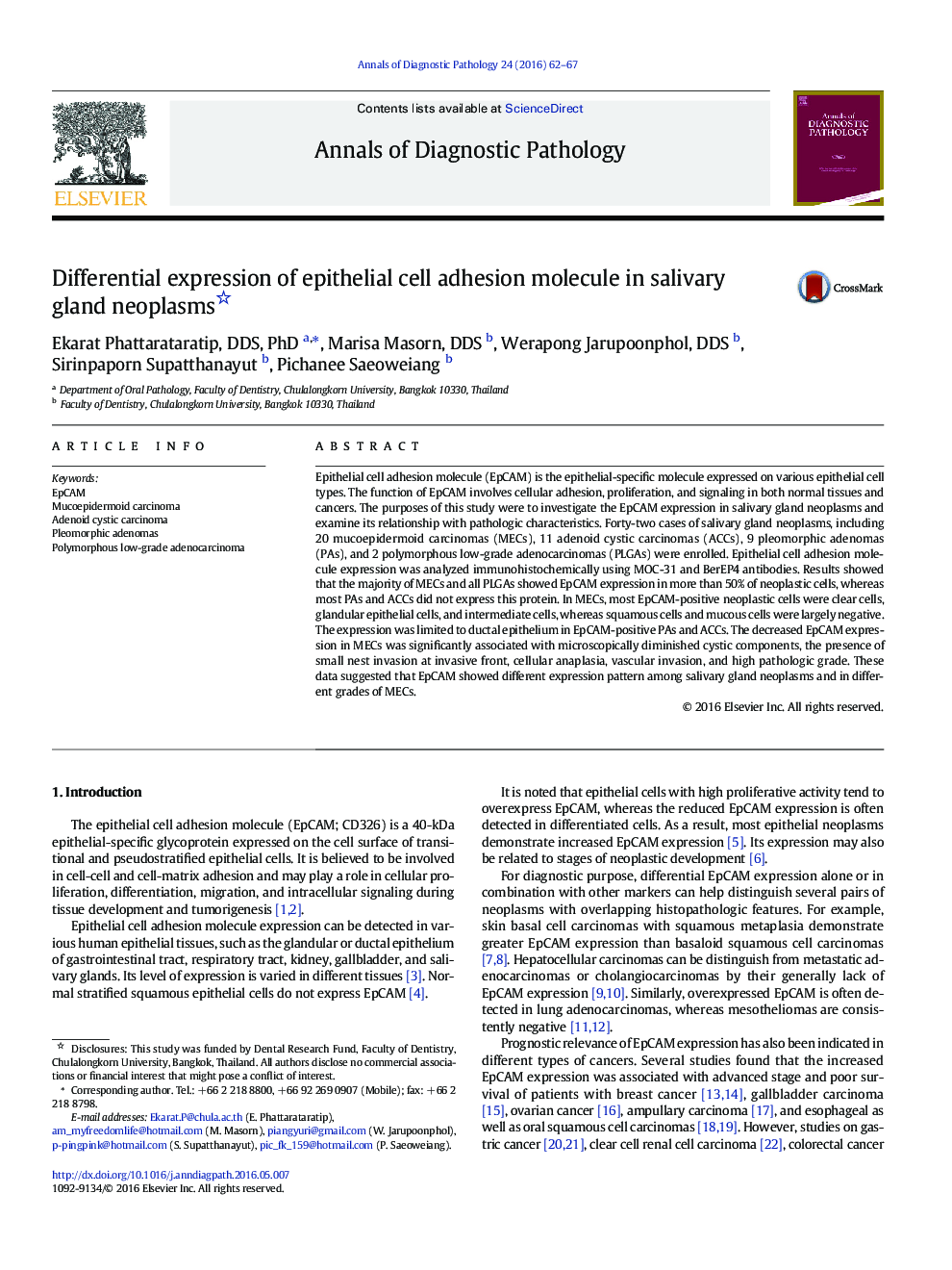| Article ID | Journal | Published Year | Pages | File Type |
|---|---|---|---|---|
| 4129690 | Annals of Diagnostic Pathology | 2016 | 6 Pages |
•The majority of mucoepidermoid carcinomas and polymorphous low-grade adenocarcinomas show high EpCAM expression, whereas most pleomorphic adenomas and adenoid cystic carcinomas do not express EpCAM.•In pleomorphic adenoma and adenoid cystic carcinoma, the EpCAM-positive neoplastic cells are ductal cells.•In contrast to the cribriform and tubular variants of adenoid cystic carcinoma, the solid variant shows high EpCAM expression.•In mucoepidermoid carcinoma, the majority of EpCAM positive cells are glandular epithelial cells, clear cells, and some intermediate cells.•The decreased EpCAM expression in mucoepidermoid carcinoma is associated with aggressive pathologic characteristics and high pathologic grade.
Epithelial cell adhesion molecule (EpCAM) is the epithelial-specific molecule expressed on various epithelial cell types. The function of EpCAM involves cellular adhesion, proliferation, and signaling in both normal tissues and cancers. The purposes of this study were to investigate the EpCAM expression in salivary gland neoplasms and examine its relationship with pathologic characteristics. Forty-two cases of salivary gland neoplasms, including 20 mucoepidermoid carcinomas (MECs), 11 adenoid cystic carcinomas (ACCs), 9 pleomorphic adenomas (PAs), and 2 polymorphous low-grade adenocarcinomas (PLGAs) were enrolled. Epithelial cell adhesion molecule expression was analyzed immunohistochemically using MOC-31 and BerEP4 antibodies. Results showed that the majority of MECs and all PLGAs showed EpCAM expression in more than 50% of neoplastic cells, whereas most PAs and ACCs did not express this protein. In MECs, most EpCAM-positive neoplastic cells were clear cells, glandular epithelial cells, and intermediate cells, whereas squamous cells and mucous cells were largely negative. The expression was limited to ductal epithelium in EpCAM-positive PAs and ACCs. The decreased EpCAM expression in MECs was significantly associated with microscopically diminished cystic components, the presence of small nest invasion at invasive front, cellular anaplasia, vascular invasion, and high pathologic grade. These data suggested that EpCAM showed different expression pattern among salivary gland neoplasms and in different grades of MECs.
